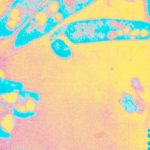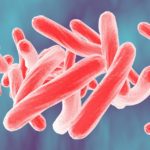Lien vers Pubmed [PMID] – 30055020
Biol. Cell 2018 Jul;
Infection with Mycobacterium ulcerans results in a necrotising skin disease known as a Buruli ulcer, the pathology of which is directly linked to the bacterial production of the toxin mycolactone. Recent studies have identified the protein translocation machinery of the endoplasmic reticulum (ER) membrane as the primary cellular target of mycolactone, and shown that the toxin binds to the core subunit of the Sec61 complex. Mycolactone binding strongly inhibits the capacity of the Sec61 translocon to transport newly synthesised membrane and secretory proteins into and across the ER membrane. Since the ER acts as the entry point for the mammalian secretory pathway, and hence regulates initial access to the entire endomembrane system, mycolactone-treated cells have a reduced ability to produce a range of proteins including secretory cytokines and plasma membrane receptors. The global effect of this molecular blockade of protein translocation at the ER is that the host is unable to mount an effective immune response to the underlying mycobacterial infection. Prolonged exposure to mycolactone is normally cytotoxic, since it triggers stress responses activating the transcription factor ATF4 and ultimately inducing apoptosis.


